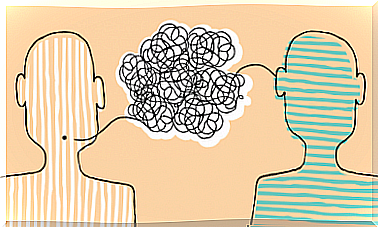Counseling: What Is It And How Is It Implemented?

In difficult situations such as the illness of a child or the death of a family member, some health professionals seek counseling to help patients. These professionals agree with Viktor Frankl on something very important: attitude is a personal choice. They therefore work so that the attitude taken to face difficulties is as healthy as possible.
Viktor Frankl was an Austrian psychiatrist of Jewish origin who survived three years in concentration camps such as Auschwitz or Dachau. Because of this difficult experience, he began to write books in which he often emphasizes that there are still reasons for living despite everything. Thus, the professionals who work from this perspective try to discover, through questions, what are the reasons for living of each patient, in order to help them find the light at the end of the tunnel.
Counseling: a relational tool
Counseling, or psychological counseling, is a practice that involves exploring the subjectivity of the other in order to be able to support him. In other words, it is the art of making a person think through a series of questions in order to enable them to make the decision that they deem most appropriate for them and, ultimately, for their health.

The goal of counseling is to maximize the skill level of the patient at a lower emotional cost. For this, the therapist will start from three fundamental attitudes: welcoming, presence and compassion, as well as a series of fundamental skills. These skills are:
- Emotional management : emotions are natural. Recognizing and accepting them are the first steps in being able to manage them. The professional must ensure that the suffering of others does not prevent him from carrying out his work correctly. On the other hand, it will teach the patient to manage his emotions.
- Effective Communication: The therapist should not be bossy or paternalistic with the patient. It is not about giving orders or overprotecting the person who comes to ask for help. It is about offering her autonomy and tools so that she is able to make a decision and solve problems on her own.
- Coaching and emotional support : emotions in the face of suffering are strong and varied. They should not be stopped, but rather legitimized and supported.
- Problem solving: it is a matter of shared decision making between patient and professional.
Counseling Intervention: Effective Communication in Four Steps
For the ability to communicate with the patient to be effective, four basic steps must be taken:
- Stop and Connect with Yourself : It is important for the practitioner to focus on the present moment using the connection with their breathing. This will allow him to give himself a few seconds to choose his answer to a patient’s question.
- Validate: validation is the ability to listen to the emotion of the other and to show empathy. It is about legitimizing the patient’s point of view and making him see that his behavior has valid reasons for being. It is only through the feeling of being accepted and validated that the channels of communication open up: the professional may not agree with the opinions or behaviors of the patient, but he can nevertheless understand them. and validate them. Thus, the principles of validating communication are to resist the reflex to correct and tell the patient what to do, to understand the patient’s needs and concerns, to listen to him and to facilitate his autonomy so that he can act.
- Ask: This step is the foundation upon which counseling is built. It is about the fact that the professional conducts open and focused questions that help the patient to think and to make satisfactory decisions. Some open-ended questions that can facilitate communication with the patient are: What do you know about your disease? What do you want to know about her? How do you feel ? How can I help you ?
- Dialogue: Dialogue is the means of informing and sharing perspectives with the patient. It is very useful to make constructive criticism to ask for changes. To do this, it is advisable to start by describing the problem and expressing the feelings that this problematic behavior generates, and then requesting options for change, while proposing alternative behaviors that replace the previous one.

The Counseling Problem Solving Model
It is important to clarify that in helping patients make decisions, it is very helpful to follow the problem-solving model. This model is broken down into the following steps :
- Orientation towards the problem: this is linked to the attitude that is adopted towards the problem. This attitude can be avoidance, impulsivity, proactivity… Once he has identified the patient’s attitude towards the given situation, the therapist encourages the adoption of a positive attitude in which the problem supposes a challenge that will help to grow on a personal level.
- Define the problem in a specific way by exploring the perspective of both parties: the patient and the professional may have different points of view, which is positive in promoting change.
- Look for alternative solutions: it is very common at this stage to implement a brainstorming or a shower of ideas generating different possible options.
- Balance the pros and cons of each option raised as part of the brainstorming.
- Choose the option that is ultimately considered the most appropriate.
- Act: implement a plan in stages. The steps should be easy and achievable so that it does not get dropped.
- Reassessment: Once the chosen plan has been implemented, it is advisable to observe how it unfolded and what its results were. If the problem has been minimized thanks to the decision taken, we will strengthen it; and if it didn’t work, we’ll rethink the why and how in order to make it work.
Ultimately, the tools described will encourage the patient to make their own decisions and take responsibility for their life. It is only in this way that we will succeed in getting him to mobilize in order to change, and that this change will endure. If the patient is not asked what worries him or what would help him and the professional took full control, the problem would not be solved, or would be solved for a very limited time.










